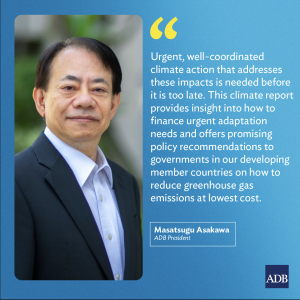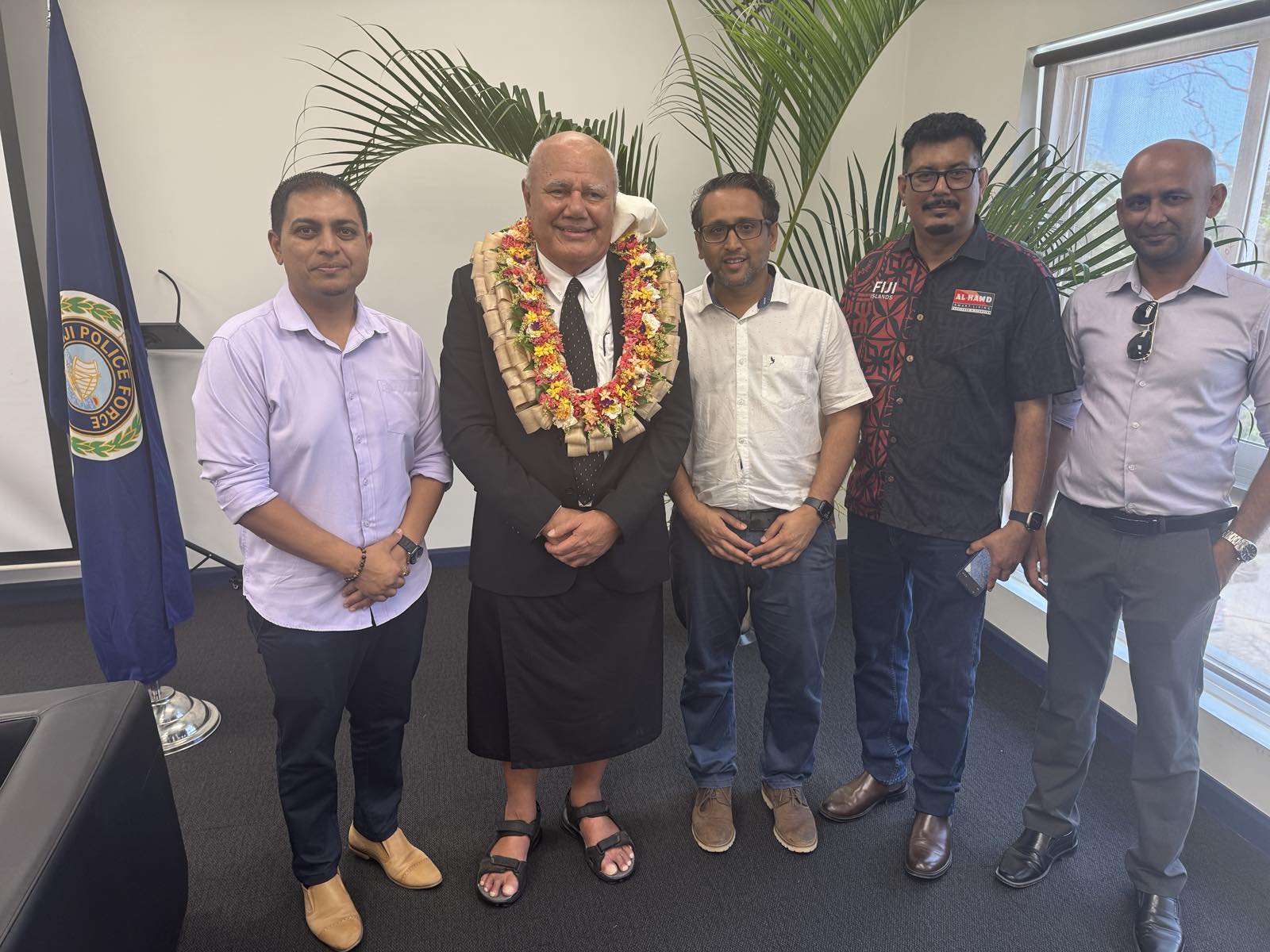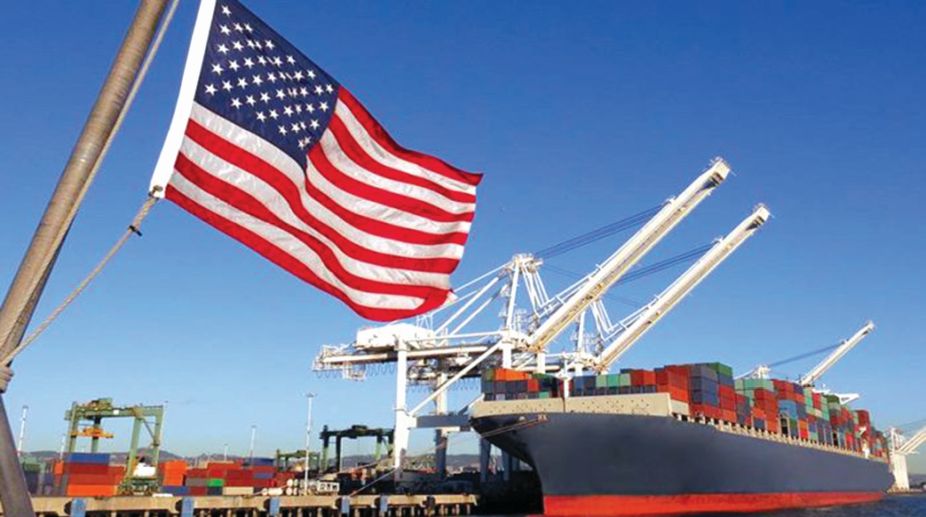The impacts of climate change could reduce the region’s GDP by 17% by 2070 under a high-end greenhouse gas emissions scenario, says a new report published today.
If the climate crisis continues to accelerate, up to 300 million people could be threatened by coastal inundation, causing damage for trillions of dollars.
The good news is that the report finds regional public sentiment supports climate action. It also describes how the governments of developing member countries can accelerate adaptation responses, and shows how carbon markets can help reduce greenhouse gas emissions cost effectively.

CLIMATE CHANGE
Innovative Financing: A Path to Climate Resilience in the Asia-Pacific

As the world’s attention begins to turn on Baku for COP29, the call for urgent climate action has never been louder. For the Asian Development Bank (ADB), the conference represents an ideal moment to launch a major response to this call—the Innovative Finance Facility for Climate in Asia and the Pacific (IF-CAP). This facility aims at nothing less than transforming climate action by helping close the climate finance gap in Asia and the Pacific.
Responsible for about half of the world’s greenhouse gas emissions and home to over half of the global population, including some of the most vulnerable communities, the Asia and Pacific region is pivotal in combatting climate change and building resilience. ADB President Masatsugu Asakawa stated it simply: “The fight against climate change will be won or lost in Asia and the Pacific.” Given the region’s population, economic growth, high integration with global value chains, and vulnerability to extreme weather events, the stakes for climate action could not be higher.
The Need for Scaled-Up Climate Finance
Asia and the Pacific face a myriad of climate threats, from rising sea levels flooding coastal cities, to the existential threat confronting smaller low-lying island nations. Extreme weather is ravaging agricultural sectors, increasing food insecurity, and pushing rural communities deeper into poverty. These crises inflict enormous damage, wreck human lives, destabilize economies, and worsen social inequalities. Although the region has made advances in boosting climate resilience, existing funding mechanisms fall far short of what is needed to address the threats.
By harnessing their human and financial resources, multilateral development banks (MDBs) like ADB have played a pivotal role in financing climate initiatives. Nevertheless, the recent G20 Independent Expert Group has urged MDBs and others to make further steps in providing innovative finance solutions to close the growing climate finance gap.
IF-CAP: A Game-Changer in Climate Finance

ADB’s IF-CAP is a pioneering solution to scale up climate finance primarily through unfunded contingent contributions. With $2.5 billion in contingent pledges — acting as financial guarantees rather than direct funding — IF-CAP unlocks over $11 billion in additional climate finance. This model boosts ADB’s risk-bearing capacity, allowing it to provide more financing for climate programs and projects.
Given ADB’s historically low loan loss rates, IF-CAP offers participants a low-risk, low-cost, yet high-leverage mechanism that expands climate financing to meet the region’s urgent needs whilst crowding in funding from capital markets.
This approach is a model for scaling up climate finance globally, demonstrating how MDBs can enhance their financial capacity and impact without resorting to the complex and sometimes politically fraught option of seeking a general capital increase.
In a world where governments are constrained by fiscal pressures, IF-CAP provides a scalable way to finance urgent climate needs.
Setting a Global Precedent in Collaborative Climate Finance
ADB’s IF-CAP is critical for fighting climate change in Asia and the Pacific and offers a scalable model for global development finance, which other MDBs and development institutions can replicate. The IF-CAP model could spark a new era of collaborative financing, showcasing how targeted development finance can be mobilized with low risk and high leverage. The model provides a shared pathway for how MDBs can scale their impact in addressing global challenges.
Moreover, the development of IF-CAP underscores the power of partnerships. Working with several founding partners—namely, Denmark, Japan, the Republic of Korea, Norway, Sweden, the UK, and the US—the program’s collaborative design ensures it is both balanced and ambitious. This inclusive and intentional approach highlights the power of mobilizing multi-stakeholder engagement in creating climate finance solutions.
Conclusion: A Timely Launch
Underscoring the G20’s vision of new and enhanced financial solutions, the launch of IF-CAP at COP29 in Baku aims to highlight and harness the global push for more ambitious climate commitments. With conventional financing models proving insufficient to meet Paris Agreement targets, IF-CAP aims to fix this gap by offering a derisked dynamic funding model that can adapt to evolving climate finance needs.
ADB’s IF-CAP therefore marks a significant advancement in climate finance, addressing both the scale of the climate crisis and the need for innovative funding solutions. By unlocking $11 billion in additional climate finance through a low-risk and high-leverage model, IF-CAP strengthens the global fight against climate change and offers a compelling model for other MDBs and development institutions. With climate action becoming more and more urgent, IF-CAP demonstrates that climate capital can be mobilized and multiplied by innovation and collaboration to resolutely resolve the climate crisis.
SOURCE: ADB







